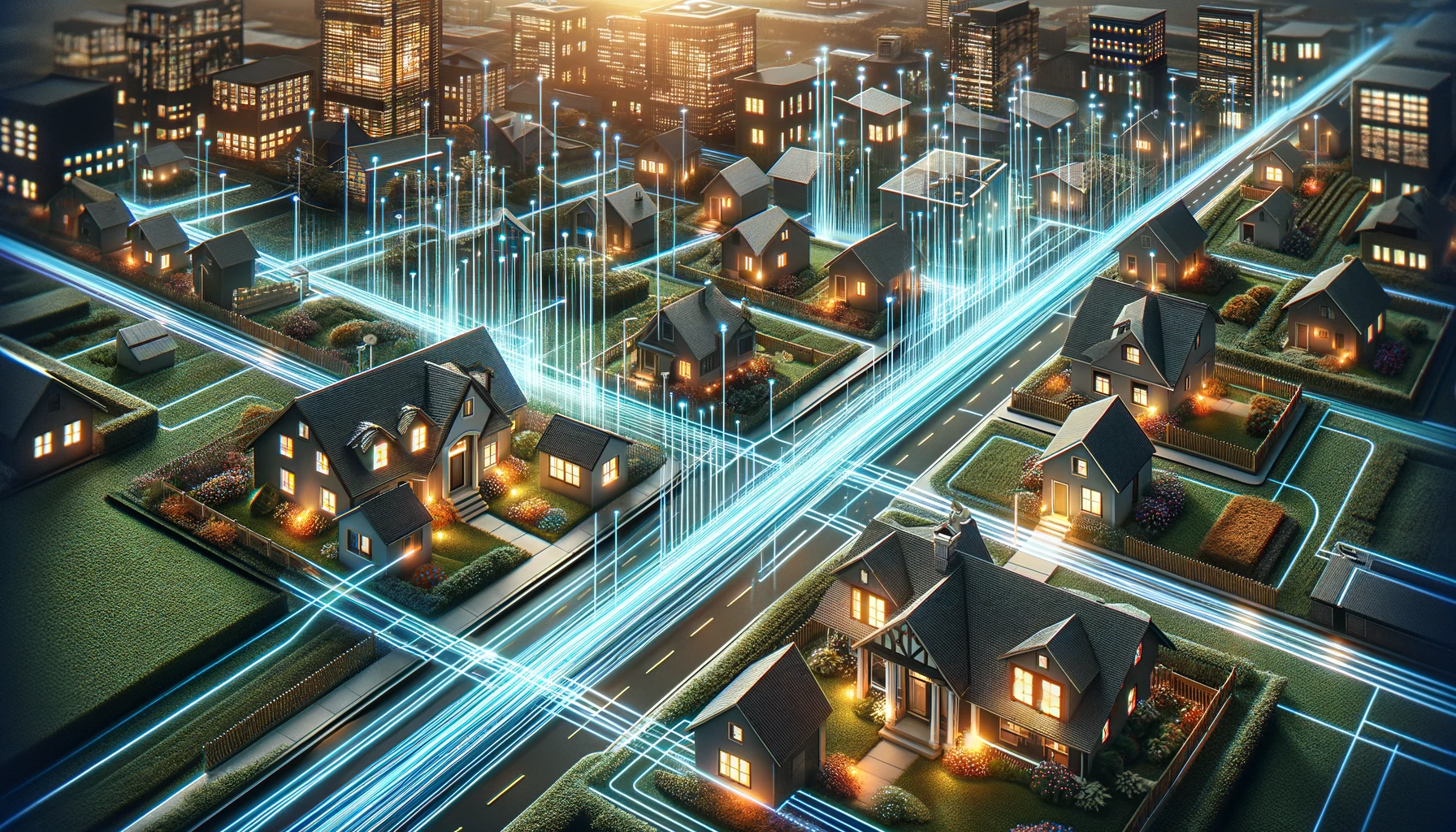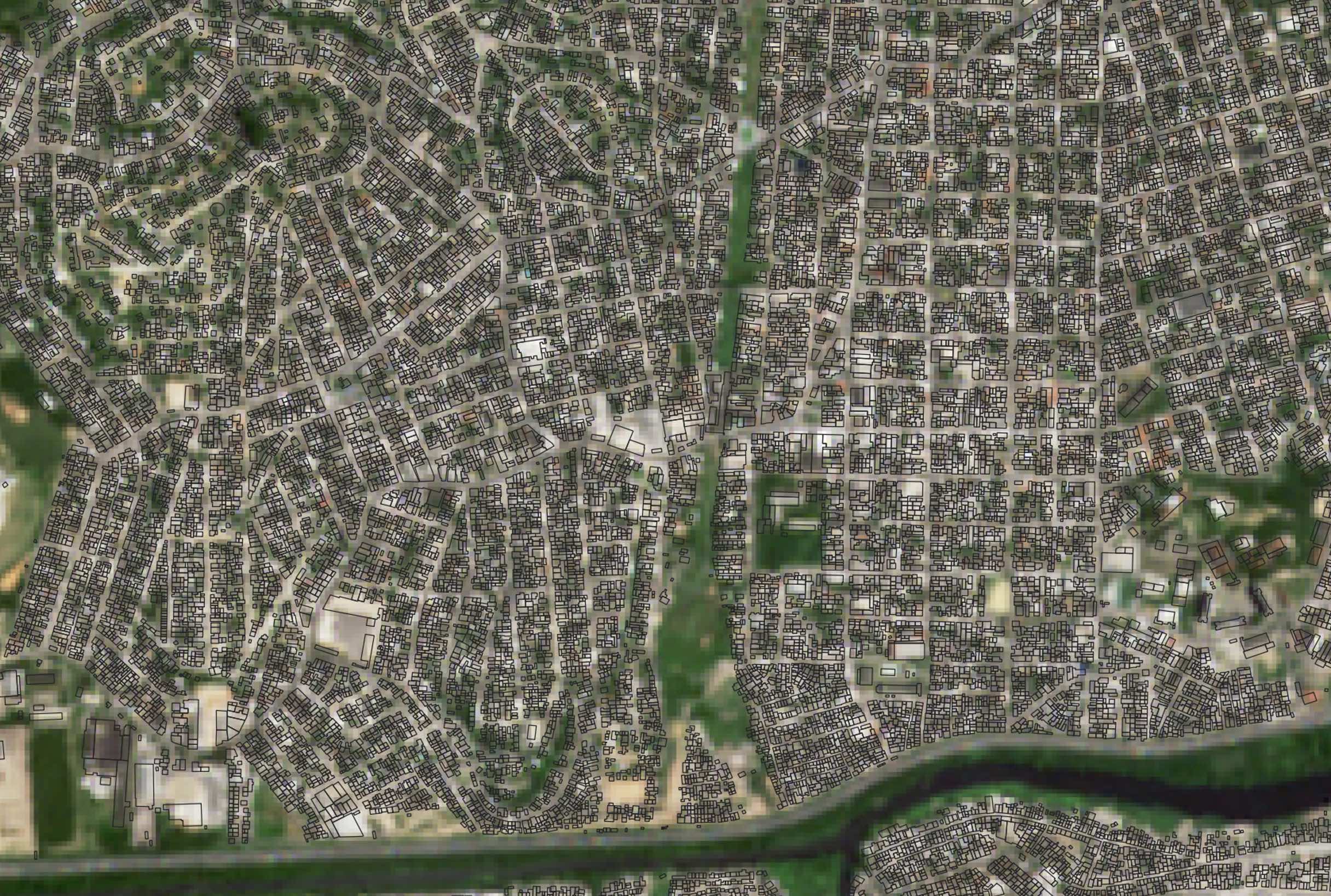Countrywide Building Footprints for Planning Fiber Deployments (FTTH)
Help Bring Internet Connectivity to Under-Served Markets

Billions of people still have no broadband Internet
Around the world, millions of homes and businesses lack FTTH connections — with major social and economic consequences.
FTTH is a great way for families and small businesses to get online at home or at work. Fiber optic cables offer unparalleled download and upload speeds and minimal distortion. That makes them attractive when compared to dial-up, WiFi hotspots, mobile internet, and other methods.
FTTH involves directly connecting fiber to the premises of homeowners and businesses. Unfortunately, in many countries, it is challenging for telecommunications companies to deliver FTTH services due to a lack of information about properties and their location.
Many countries lack cadastral data showing where properties are, their density, boundaries, and surrounding infrastructure. This makes planning FTTH networks extremely difficult for internet service providers.
Only 22
Countries (out of 195) that have achieved FTTH penetration rates of 50% or above*
1 %
Increase in GDP for every 10% increase in household broadband access**
< 40 %
Of households in most developing countries have any kind of broadband contract**
* Source: FTTH Council
** Source: World Broadband Association
Building Footprint Maps are Critical to Planning FTTH
When planning broadband networks, building footprint maps are extremely valuable to telecom operators. Using building footprint maps means you can:
- Know how many homes and businesses are in a street, neighborhood, village, town, city, or even country
- Identify potential customers
- Know where properties are, and the density/type of buildings
- Prioritize locations for FTTH and fiber to the premises (FTTP) projects
- Accurately and cost-effectively plan where to dig and lay fiber optic cables
LuxCarta’s FTTH Solution
Our countrywide digital mapping products are used by telcos around the world to plan their FTTH services. Using global, up-to-date satellite imagery, our technology rapidly and accurately processes images of vast areas, and then recognizes and classifies all building footprints in those areas.
LuxCarta creates linear vectors of individual buildings and their footprints, as well as identifying other kinds of land use (roads, bridges, waterways, topography, etc.). We can even create 3D models of buildings and vegetation, exclusively using satellite imagery.

How LuxCarta’s technology helps your FTTH rollout
If your organization is planning to roll out fiber to the premises in countries which lack cadastral data, our solutions offer a powerful way of improving your processes. You get:
- Accurate, up-to-date, and highly reliable maps, showing where buildings are, their size, shape, and density for entire countries
- The ability to create nationwide maps that identify and geolocate all buildings on an easy-to-use interface
- Major cost savings, thanks to optimized planning and time saved traveling.
- Greater confidence in your FTTH rollout plan
- Speedier connections for customers, meaning your company leads the market
- Improved decision-making when deciding where to dig and lay fiber optic cables
Get Your FTTH Project Started with LuxCarta
We have 30+ years’ experience working with telcos worldwide to plan the rollout of new technology. Our groundbreaking, AI-powered mapping solutions are ideally suited to the needs of companies delivering fiber to the home (FTTH) in countries that lack accurate or up-to-date cadastral information.
We help you rapidly identify buildings across entire regions, so you can plan your FTTH rollout most effectively. Contact us today to learn how we can help you plan your FTTH service.
More LuxCarta Services for Emerging Markets
End the Digital Divide in Emerging Markets.
Learn how our solutions are used by telecom companies, governments and NGOs to plan and roll out internet infrastructure around the world.